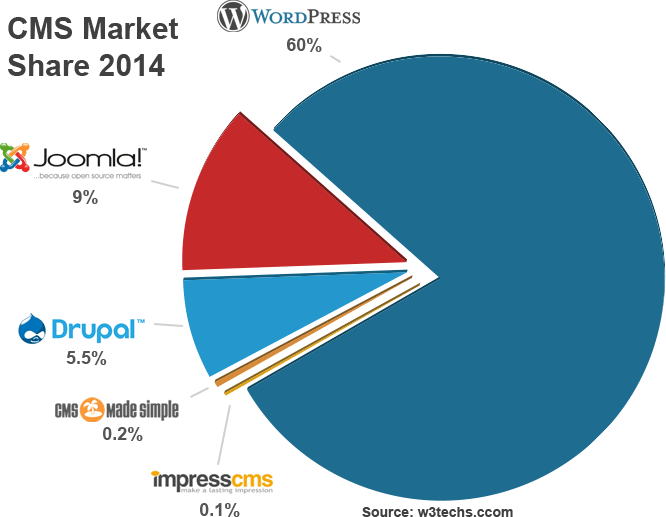 There’s a reason why we differentiate between marketers and web developers. Web developers are creators of the web’s content architecture.
There’s a reason why we differentiate between marketers and web developers. Web developers are creators of the web’s content architecture.
They use the power of hypertext and code to produce new ways of containing and transmitting information in previously difficult situations. The beauty of their work is their ability to rethink and reinvent content, whether in marketing, the news, games, or social interaction.
Marketers are clearly not web developers.
Instead, the best marketers use web content (and design) for a very specialized purpose: to qualify sales opportunities. For marketers, the entire goal of content publication is to present and produce purchase options to prospective buyers. (Note: Many marketers see themselves more as web developers and designers with very little relation to sales. Hence, there are plenty of examples of stunningly beautiful websites that do absolutely nothing for a company’s revenue.)
So, when considering web-based marketing, it’s important to consider whether the web is actually set up to marketers’ advantage. Certainly when the World Wide Web was first introduced (circa 1991), it was solely the project of web developers, not marketers. In fact, the first website was only a newsgroup—pure content meant for the digestion of other readers; there was no selling point attached.

Today, one in six sites on the Internet is published with Wordpress, the most popular content management system (CMS) in the world. It’s a powerful and very flexible web publishing system, built by a blogger and web developer in 2003, and made free to use to the public.
There’s a reason it now dominates the web, and that’s the fact that Wordpress is simply the most straightforward way of making a site operate like a reliable publication with a low barrier to entry. However, just like with the first websites, Wordpress wasn’t made for marketers. Remember, it was for bloggers, publishers—people who sell words, not services—that shaped Wordpress’ popularity.
Still, today’s marketers who use Wordpress have found plenty of add-on solutions that adapt and twist Wordpress into a marketing platform. But those who are experienced using Wordpress know that even though it’s open source, the only thing free about Wordpress is its original purpose: pure content publication. Using it to market a business involves extra cost, extra effort, and the acceptance of several limitations.
Understanding the Total Cost of Wordpress
If you want more than publication—if you want content that delivers results—whether that’s attracting a larger audience, producing an online community, or generating real marketing leads, the cost of using Wordpress can be just as expensive as a full-service program.
Visit any tech blog and you’ll find plenty of analyses about the total cost of choosing Wordpress for a basic site. Once you’re done hosting, buying themes, and choosing other add-on features, a Wordpress site—while still open source—is clearly not a free operation. Jerod Morris of Synthesis writes that “True Cost of Building and Managing a Wordpress Website” requires a total cost of ownership (TCO) analysis: companies should budget for hosting, developer fees, security services, storage, personal time, and backup before making the choice.
While Morris’ analysis of Wordpress is perfect for personal bloggers and content outlets, his TCO is simply not the right “total” for for-profit companies. Businesses don’t build websites just to distribute information. They construct websites that they want to be true marketing assets—using content to drive a behind-the-scenes marketing process that pursues company leads, qualifies opportunities, and produces real sales interactions
What Wordpress Leaves Out: Contact
Because Wordpress orients businesses for content creation, it isn’t a bad choice for many marketers looking to attract a growing audience. But, most marketers know that attraction is just the first part of their job. The second—and just as important—component of good marketing is contact. If you aren’t engaging and communicating with prospects, then the value of attraction is completely limited for actually growing sales. The combination of content and contact is precisely what distinguishes a follower from a subscriber and a prospect from a lead. Contact drives targeted marketing, personalization, and user experience that reflects actual contact needs.
Plenty of businesses try to emulate the combined effects of content and contact by coupling Wordpress with MailChimp or some other standalone email marketing service. Eileen Lonergan, in her post on doing HubSpot without HubSpot, even describes how using these two platforms with a contact management plugin for Wordpress will allow businesses to cheaply track contacts in on-site download conversions and other on-page activities.
So if it works, what’s the problem? The fact is, these kinds of free connector techniques certainly enable a specific tactic—like on-page conversion or a personalization tag—but they don’t enable a real marketing strategy. You can’t create an efficient, thought-filled contact-targeting content campaign. You can’t produce a website built around personalization for target lead groups. You might get one or two steps, but for a holistic marketing approach, you need a unified system: a CMS as a marketer would have designed it!
Content Management Needs Contact Support
One way to think about the missing value of Wordpress is that it simply wasn’t designed to do customer and client support for contacts. Like a publisher or media outlet would, most Wordpress sites keep audiences at a perfect viewing distance. Wordpress is ideal for consumption of material—reading, viewing, and watching—which requires some significant virtual distance.

Non-publishing sites focus on direct interaction, where this virtual distance becomes minimized and where texture, interaction, and direct support are optimized. The most prolific example of this kind of “contact support” site is in eCommerce, where companies like Amazon.com and eBay.com dominate because they want their contacts to be as supported as possible in interaction.
These sites may not be as pretty—often they feel more hectic—but they have more links, more interaction, and more personalization than any other website species out there! Shopping websites take users from entry to sale in less than two clicks, and their tactics for doing so are endless.
I’d argue that Wordpress cannot be the optimal system for marketers because it’s on the opposite spectrum of web development from eCommerce. Yes, there are endless plugins for combining site features from across functions—and goodness knows, Wordpress has all the plugins anybody could need—but when you consider what will optimize your web presence for what you need your website to do, consider the underlying cost of choosing a platform that’s under-optimized for your needs.
By combining contact support with a healthy focus on content publishing, alternative systems to Wordpress—made for and by marketers—do a much better job at enabling marketing work. There might be more expense up front—an aspect that pales in comparison to Wordpress’ $0 upfront price—but when you make the choice of a content management system, consider all the tangibles and intangibles. Just doing your homework will show you the technical hidden fees of using Wordpress. But only strategy and a deep understanding of your marketing needs will shed insight on its true cost.
This post originally appeared on the Weidert Group's Whole Brain Marketing Blog. The Weidert Group is a HubSpot Partner Agency located in Appleton, WI.


